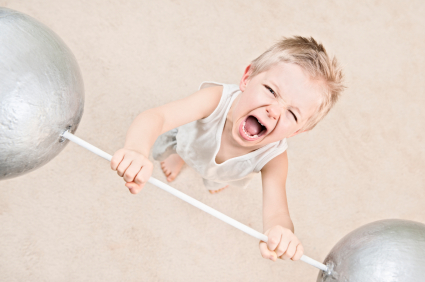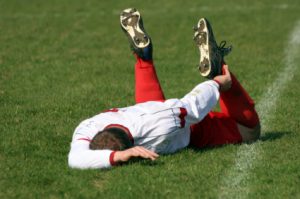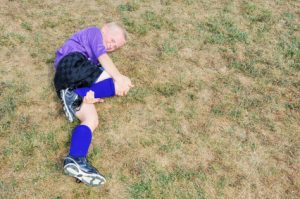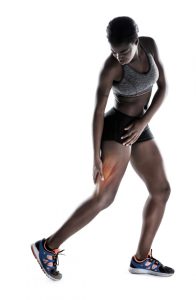
Some years ago I titled a lecture called the Disease of Excellence. I discussed why bad injuries happen to good athletes. But over the past 3 decades of training, lecturing, teaching,rehabbing on the topic of optimizing athletic performance the most underrepresented in this category are Junior Athletes. They are a unique bunch when it comes to athletic performance. Their coordination patterns mature over a given period of time and sequence;If you are a trainer of young athlete’s then you MUST know this or injuries and poor performance will occur! At each stage of development coordination patterns change. Bone maturation rates are still occurring. Muscles are developing;here are a host of other factors, but these are the most important. So knowing this we can design a safe, progressive and challenging and fun training environments. But things can go wrong in the hands of unqualified practitioners. So below I discuss 3 of the most common injuries of the Junior athlete (8-16 years of age).(in no particular order) :
COMMON SPORTS INJURY #1: The Ankle sprain
This is one of the most underrated injuries in Juniors and it shouldn’t be. Because of the ‘hyper-mobility’ of the joints the occurrence is high. Another issue is that an ankle sprain can also accompany a fracture of the fibular head. This is the bone that runs along the lateral portion of the lower leg. The fibular head is next to the knee. The ligaments attachment are more pliable than and adults so its no wonder why this occurs. However, there are methods to reduce this injury. More importantly though is the proper management of these injuries. Back in the old days, treatment was warm water bath with Epsom salts and crutches. The new protocol requires a walking ‘boot’ to mobilize the foot so it heals, and depending on severity of sprain, PT(physical therapy). This can take up to 2 weeks. Again depending on the severity, healing time can be longer. It is of utmost importance that ANY fitness programs for Juniors that are recovering from lower extremity injuries like an ankle sprain, be exposed to functional stability training. If this is not done then expect a re-occurrence of the injury!
COMMON SPORTS INJURY #2: The Knee
Whew. This could take up several blogs so I will keep it simple by listing the most familiar knee injuries
- ACL, Anterior Cruciate ligament:What makes this a unique injury is that when a 12 year old tears an ACL there can a ‘detachment’ of the ACL with some bone attached. Adults don’t suffer with this because their bone is harder thus the ACL will tear. ACL tears in females have been on the rise since the passing of
- OSGOOD-SCHLATTERS: This is occurs when the knee tendon that attaches to the tibia(see image below) pulls on its attachment called the Tibial tubercle. This anatomical protuberance will not ossfiy(harden) sufficiently enough to tolerate the the powerful pull that occurs when the big quadriceps (thigh) muscles contract. This causes ‘micro’ fractures that can cause pain. The typical treatment is a patella strap over the tendon that distributes these forces. Some doctors will suggest rest which is a bad idea or they will say “they will grow out of it” again, not a good prognosis. There are not only management strategies but preventive ones that you can put in place. These strategies are called eccentric’ training which can actually make the tendon attachment stronger! I am not a fan of telling an 11 y.o kid in pain “you will grow out of it”. There are several ways to mitigate these symptoms so an athlete or non-athlete can play without pain. These techniques require a series of movements we call eccentric training and patella ‘turn around’ of forces. Both are very effective and safe.
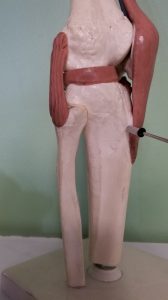 PARTIAL DISLOCATION: This happens more than you realize. The Junior may say something like “it felt like knee when out a place” or “It felt like it ‘slid out'”. This means the patella(see image) slips out(technical term,”sublux’) of its’ trochlear groove’. In this case when you look at the image below, the patella would move right then return or ‘reduce’ back to its original resting place. This can be caused by a twisting and propping motion. Often times the athletes will complain of moderate to sever pain. Some are able to return to play immediately and shouldn’t. This can be properly diagnosed by a certified Athletic Trainer, ATC or PT. This is common in female athletes because of their hypermobility. Yes. You can be too flexible. But the biggest contributing factor is poor functional muscle strength
PARTIAL DISLOCATION: This happens more than you realize. The Junior may say something like “it felt like knee when out a place” or “It felt like it ‘slid out'”. This means the patella(see image) slips out(technical term,”sublux’) of its’ trochlear groove’. In this case when you look at the image below, the patella would move right then return or ‘reduce’ back to its original resting place. This can be caused by a twisting and propping motion. Often times the athletes will complain of moderate to sever pain. Some are able to return to play immediately and shouldn’t. This can be properly diagnosed by a certified Athletic Trainer, ATC or PT. This is common in female athletes because of their hypermobility. Yes. You can be too flexible. But the biggest contributing factor is poor functional muscle strength 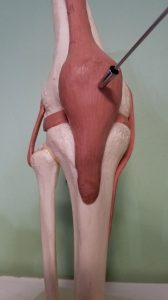 3. KNEE SPRAIN: This is the most innocuous of knee injuries. A knee sprain involves the ligaments on the outside of the knee called ‘collateral ligaments. The protect the knees side to side motion. Sometimes the right amount of outside force from another player, with the foot in an awkward position, can jeopardize these ligaments. And why it may not seem like it at the time, but they protect the more important structures of the knee like the ACL and knee cartilage which lyes between the tibia and thigh bone. A knee sprain is easily treated with ice compression, and calibrated functional training. But if pain last more than 2 weeks a torn cartilage needs to be ruled out
3. KNEE SPRAIN: This is the most innocuous of knee injuries. A knee sprain involves the ligaments on the outside of the knee called ‘collateral ligaments. The protect the knees side to side motion. Sometimes the right amount of outside force from another player, with the foot in an awkward position, can jeopardize these ligaments. And why it may not seem like it at the time, but they protect the more important structures of the knee like the ACL and knee cartilage which lyes between the tibia and thigh bone. A knee sprain is easily treated with ice compression, and calibrated functional training. But if pain last more than 2 weeks a torn cartilage needs to be ruled out
COMMON SPORTS INJURY #3: The Back
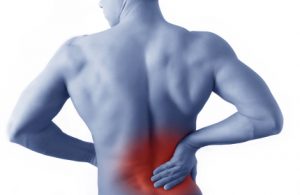 LOW BACK INJURIES: The back in sport is by far the most vexing for any level of athlete. The low back pain can impact performance significantly. At least with the previous injuries mentioned, you can see how the mechanics of an injury can happen. However, low back pain does not require physical contact ie being tackled, or checked into the boards like in hockey.. It can be caused by poor training practices, and not understanding the development stages of the spine and what it is susceptible too at a young age. The good news is that these injuries are preventable. A good sports performance training program is designed to sustain optimal performance every year they compete. But the most important goal is reducing the risk of injury and at the same time increasing the complexity of a training program. Understanding the developmental stages of young athletes ensures that injuries will be at a minimum during the training process to achieve optimal athletic performance.
LOW BACK INJURIES: The back in sport is by far the most vexing for any level of athlete. The low back pain can impact performance significantly. At least with the previous injuries mentioned, you can see how the mechanics of an injury can happen. However, low back pain does not require physical contact ie being tackled, or checked into the boards like in hockey.. It can be caused by poor training practices, and not understanding the development stages of the spine and what it is susceptible too at a young age. The good news is that these injuries are preventable. A good sports performance training program is designed to sustain optimal performance every year they compete. But the most important goal is reducing the risk of injury and at the same time increasing the complexity of a training program. Understanding the developmental stages of young athletes ensures that injuries will be at a minimum during the training process to achieve optimal athletic performance.
